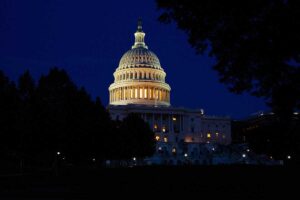On March 8, 2024, Judge J. Campbell Barker of the Eastern District of Texas vacated the National Labor Relations Board’s proposed joint employer rule. This decision by the federal judge means that for the time being, the rule created in the waning days of the Trump administration will stand.
Under the proposed rule, which was set to take effect on Monday, March 11, 2024, The NLRB had amended the rule passed in 2020 with the goal of making it easier for workers to be considered employees of more than one entity. This new standard invoked joint employer status when the employer “possess[es] the authority to control (whether directly, indirectly, or both) or exercises the power to control (whether directly, indirectly, or both), one or more of the employees’ essential terms and conditions of employment.” This change likely would have resulted in increased union organizing and collective bargaining efforts, but Friday’s decision put the implementation of the new rule on ice, at least for the time being.
Why Was the Rule Vacated?
In his ruling, Judge Barker found the 2023 rule to be unlawfully broad, writing that the new rule “would treat virtually every entity that contracts for labor as a joint employer because virtually every contract for third-party labor has terms that impact, at least indirectly…essential terms and conditions of employment.” Essentially, he rejected the logic of the rule, arguing that the joint employer status would end up applying to virtually every employer who uses third-party labor.
What Does It Mean for Business Owners?
As a business owner, it is vitally important to understand the guidelines associated with employee classification (or misclassification), and these rules change frequently. This eleventh-hour decision by a federal judge is no different. While the NLRB is expected to appeal the Texas court’s decision, for now, the court reinstated the 2020 rule which provides that only those entities which possess and exercise substantial direct and immediate control over one or more of a worker’s essential terms and conditions of employment will be considered their “employer.”
Ultimately, the decision to block, even temporarily, a rule that that could impact the legal classification of thousands of workers introduces even more uncertainty for both employer and employee in an already dynamic job market. Employers should consult legal counsel to determine if what they intended as a mere labor contract may have inadvertently created an employment relationship, with all the attendant legal consequences and obligations that come along with it.
For questions about the new NLRB rule, contact James P. McGraw by calling (724) 776-8000.





